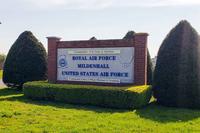BREMERTON, Wash. -- USS Ronald Reagan (CVN 76) may be one of the first aircraft carriers to implement a food color coding program called "Galley Go Green."
Normally utilized in Navy galleys ashore, Galley Go Green is used to classify the nutrient density of foods with a green, yellow, or red identification mark to help Sailors identify which foods are the healthiest choices.
"The color coding system was actually a concept that I had heard about and seen implemented in prior positions I'd had within university settings for college athletes," said Joshua Hockett, Reagan's Fit Boss. "It was easier to get people to identify what's good, what's not so good, and what to avoid this way instead of trying to get them to understand the numbers and the academic side of nutrition."
Hockett said he discovered Galley Go Green while doing research to bring the color coding system from the universities to the ship.
"I wanted to know what I could do other than just throw up some flyers," he said.
Hockett explained that he wanted to take the guess work out of knowing which foods are healthy based on a description on a poster. "I needed to clearly label foods in the line to show Sailors which entrees they should consider a good food-a performance food-a moderation food or a cautionary food. Sometimes it's confusing for them to identify which are which."
The green stickers, for "go" foods, identify high performance foods that are lower in fat, packed with nutrients and are considered a great choice.
The yellow stickers, for "caution" foods, identify foods that Sailors should eat in moderation. They typically have a medium level of fat and are more processed than high performance foods.
The red stickers, for "stop" foods, identify foods that Sailors should limit eating, as they are high in fats and processed sugars.
A food's category is based on the amount of sodium, total fat, cholesterol and the number of calories in that food item.
The criteria for determining which food goes in which category is based on recommendations from a wide range of organizations, such as the American Heart Association, the National Heart, Lung, and Blood Institute, the Department of Health and Human Services, the U.S. Department of Agriculture, the Food and Drug Administration, and the National Institute of Health.
Chief Culinary Specialist Lindsay Alvarez, the Leading Chief Petty Officer of Reagan's main mess decks, said she fully supports implementing Galley Go Green on the ship because of the benefits of the program.
"I think it's a great idea," said Alvarez. "I'm glad we're doing it because it concerns everyone aboard, especially with the Physical Readiness Test (PRT) coming up.
"We have a lot of healthy choices, but sometimes Sailors have a hard time identifying them because many people don't know the nutritional side of the house for a balanced diet," she added.
Many Reagan Sailors said they liked the idea and thought it made healthy choices simpler for the crew.
"It will make people feel better about their food choices because normally there is no way for them to know what they're taking in," said Aviation Boatswain's Mate (Equipment) 3rd Class Andreas Leal. "This will be more convenient for people because visual stuff is always easy to understand. It will give people a better idea of what to go for when they eat."
The plan for the ship is to use labels to identify foods in the serving lines, as well as posters and table-top displays so Sailors can see just what they're putting into their bodies. A master food list identifies which galley staples are high performance, and how big a serving size really is.
"It's a good idea to help give people a push in the right direction in terms of healthy choices," said Culinary Specialist 3rd Class Raqueem Joseph. "It will definitely be beneficial for people who are trying to make weight for the PRT, but it could also help with productivity at work. You know, good rest, good food, good people."
USS Ronald Reagan Implements 'Galley Go Green'
© Copyright 2024 Navy News. All rights reserved. This material may not be published, broadcast, rewritten or redistributed.



























